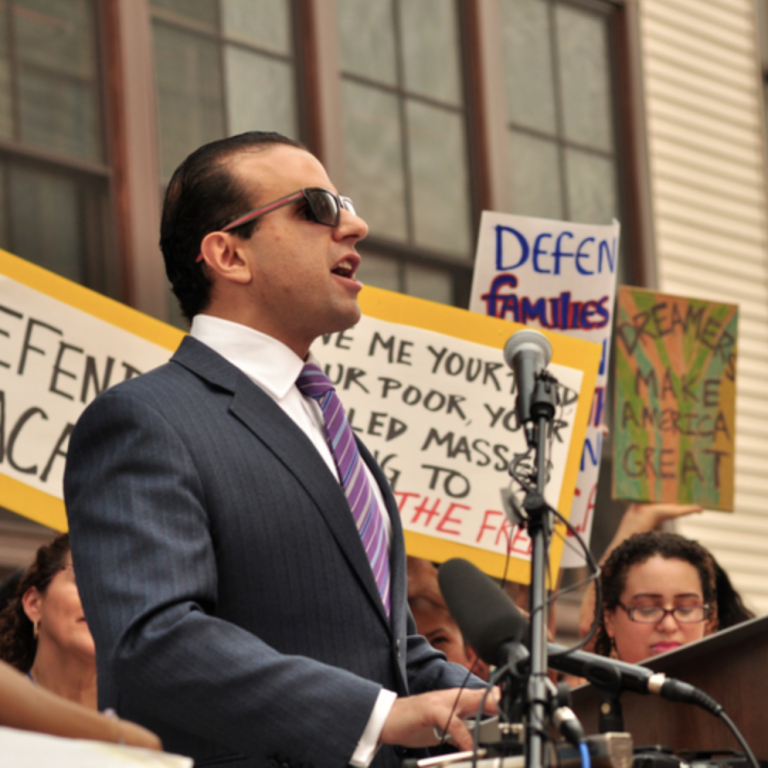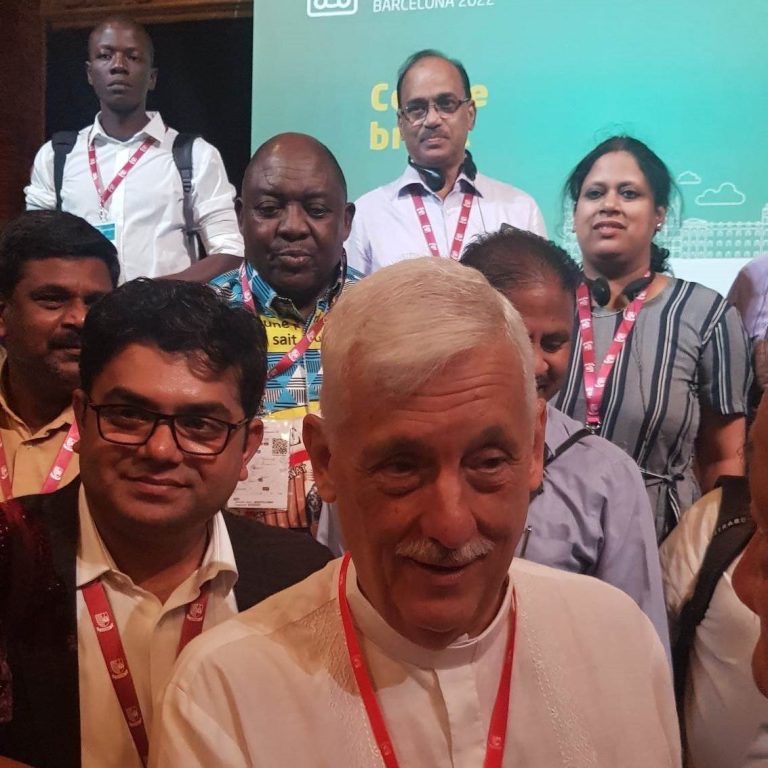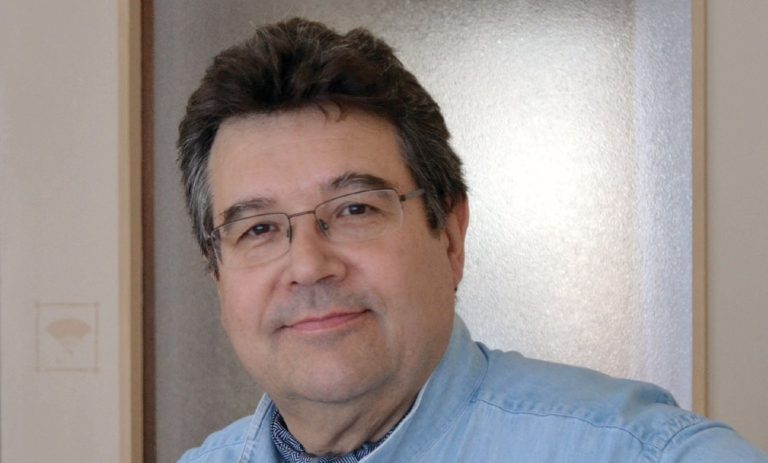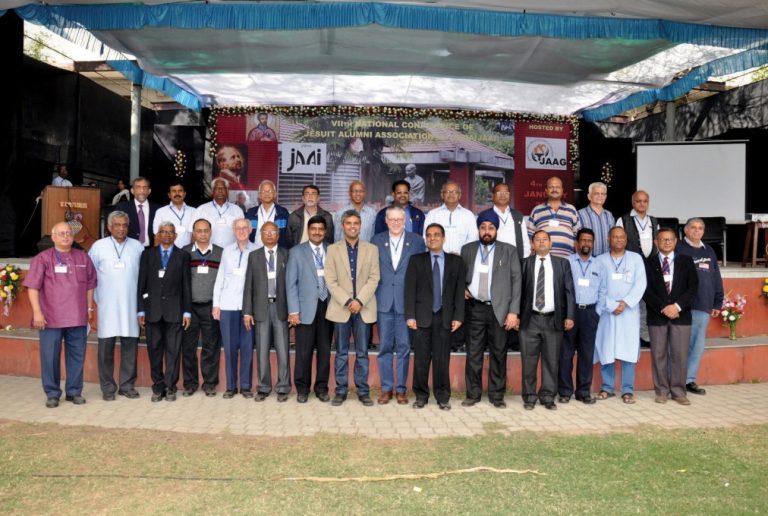Loyola, the hidden treasure of the Basque Country
Maurice Selvais, an alumnus of the Saint-Michael college of Brussels, in Belgium, tell us his peregrinations in Gascony, where the great St. Ignacio is born. Maurice is a member of the Alumni Association of his college as well as a regular writer at WUJA’s service.
Our trip begins in Pamplona, where we came the day before. We slept there and could visit that astonished city thanks to Cyril Couvreur, one of our Belgian friends that moved to Spain for business with South America. We could feel such a delicious atmosphere, so lookalike of those towns set between hills and mounts. The fresh air there – not too hot or too cool in the evening – smoothly comes to remind us, even if we are only a few miles away from the French border, that we undoubtedly are in Spain.
Actually, to join Navarra’s capital city, what better than following the old sinuous route that Charlemagne walked onto 1.340 years ago, snaking along the famous Camino that – still today – pilgrims take to join Saint-Jean-Pied-de-Port, at Pyrenees’ feet, and Roncevaux’ Monastery, situated at the very top of the mountains. There stands a monolith to the memory of Roland, the heroic Breton Count that perished under the Basques’ swords and entered into the myths of French History thanks to a famous ode named “Chanson de geste”, in French, aka a middle-aged song told by the minstrels during banquets.
My father, my brother and I left early in the morning from the feral town to join the Sanctuary of Loyola, in Azpeitia, in the heart of the Basque Country. Although it is 35 miles away from Pamplona, it took us almost 3 hours to join the great Saint’s native village.
Powered by a sanctifying patience and good axles, the modern ages pilgrims that we were for one day showed that having a plenary indulgence – as Pope Francis indicated it in 2015 – had to be deserved, of course.
We arrived at noon on the holy place, that huge basilica inaugurated in 1738 and wanted more than a half-century before by queen mother Marianne of Austria. A lot of well-known architects and entrepreneurs alternated one by one at the head of the project, among those we can particularly name Carlo Fontana the Roman, directly chosen by the general headmaster of the Society, Juan Pablo Oliva. This one wanted that the College, the future Sanctuary, was a masterpiece that surrounds the House-tower where the great Saint was born. Collaborated also the Flemish Jesuit Jean Bégrand, Basque master Martin de Zaldua, Sebastian de Lecuna and the prestigious architect from Salamanca Joaquin de Churriguera, the master of the construction of Salamanca’s cathedral.
The interior of the basilica is sumptuous and, at Ignatius’ image, so elegant and refined. Eight magnificent black-marble arches limit the space of the 20-meters diameter-long central rotunda, each crowned by an elegant frieze. The second body is the great marble tambour, clearer, upraised, with a base decorated with warrior motifs and with eight marble bights, all similar and framed by censers. The cross that crowns the pinnacle, 65-meters high, was posed in 1735.
[row]
[column sm=”6″]
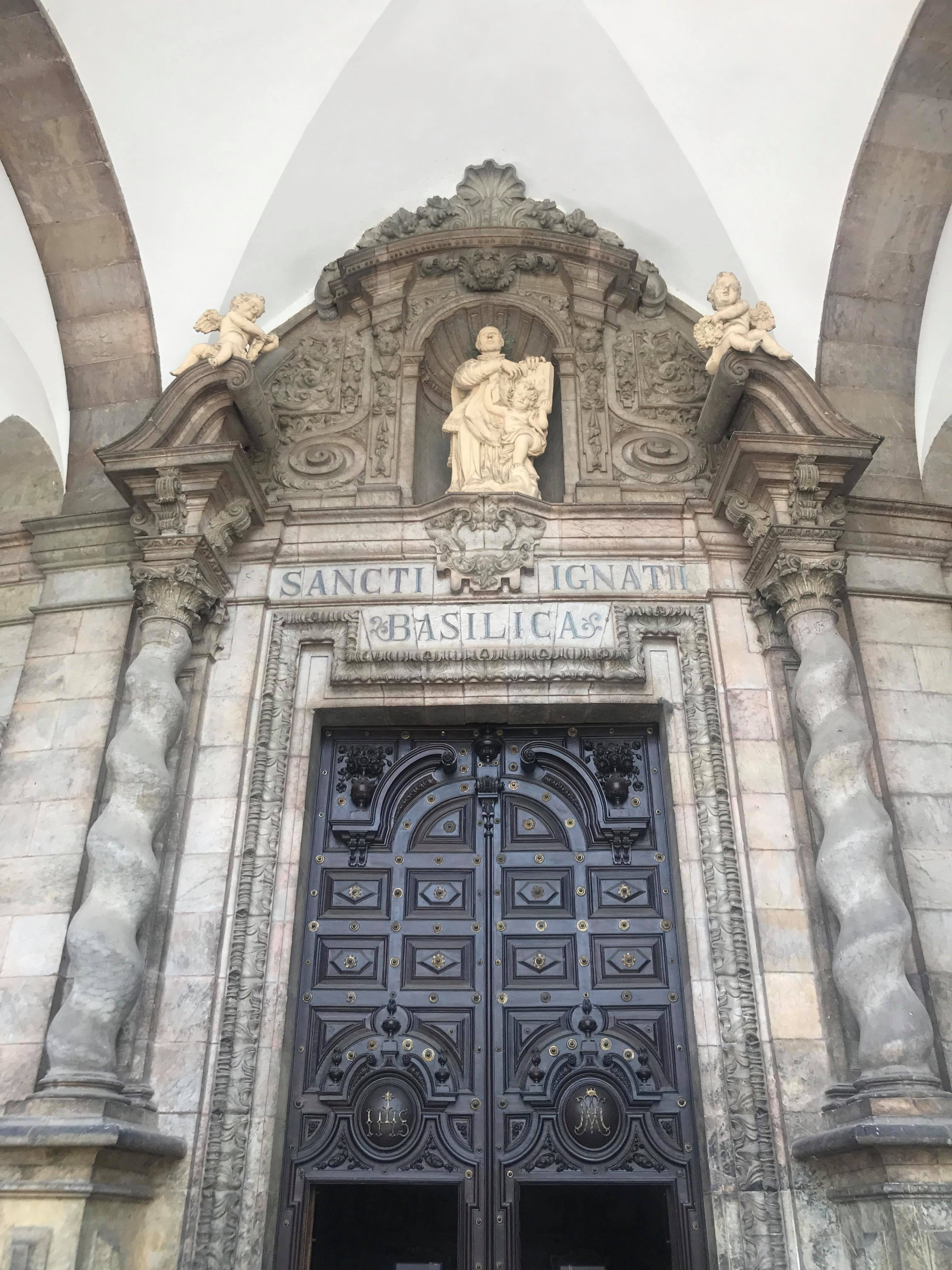
[/column]
[column sm=”6″] [/column]
[/row]
Italian artists did the sculpture. From 1734 to 1738 – date of his death – Cayetano Pace shaped stucco the eight big allegoric pillars of the Virtues that decorate the base of the cupola on the upper cornice. It is also him who did the great Saint Ignatius’ statue that stands in the central recess, above the main entry of the basilica.
Miguel de Mazo, who stayed loyal to Cayetano’s work after his death, did the other sculptures of the doors that represent Jesuit saints Francis Xavier, Francis Borgia, Aloysius Gonzaga and Stanislas Kostka.
All that stunning construction was interrupted with the Jesuit ejection from Spain in 1767. When the Society came back from exile, at the beginning of the 19th century, the Spanish government gave back the Sanctuary to the Society. But a few time later, with the confiscation of Church property in 1835, the government took the Sanctuary again and gave it to the Disputacion Foral de Gipuzkoa in 1843, who is still the landlord nowadays. That noble institution had the kindness of giving back the House-tower to the Society. We had the great privilege to visit it after the closing hours thanks to our membership to the Ignatian network.
[row]
[column sm=”6″]
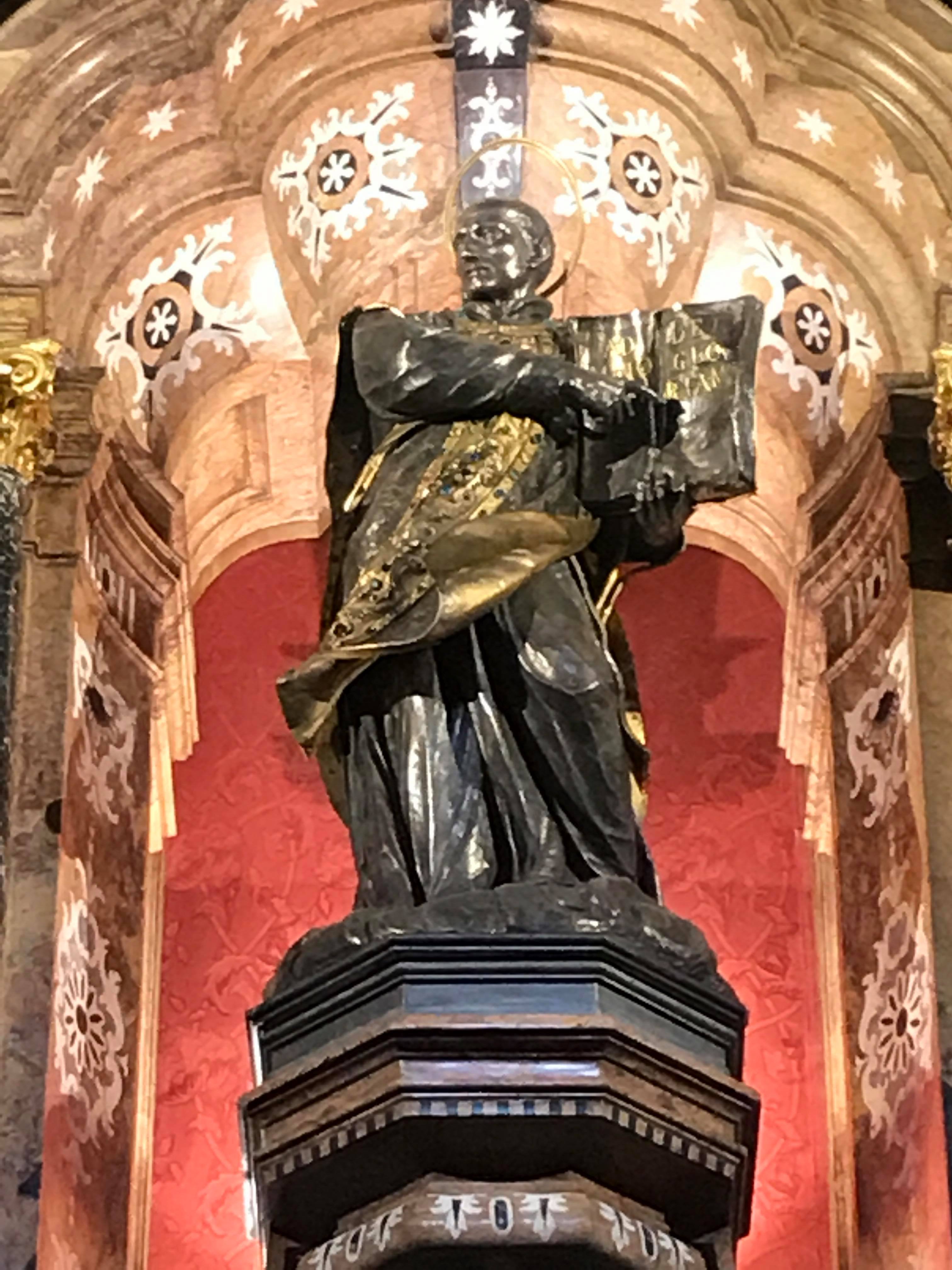
[/column]
[column sm=”6″] [/column]
[/row]
On a hill in front of the Urola River banks, that House-tower was built by don Juan Pérez of Loyola – a Ignatius’ elder – at the end of the 14th century. It replaced a former house that almost completely disappeared. The new tower, made of stones, has 1.90-meter thick walls.
Outside, above the door, the Loyola coat of arms: a cauldron hung by a chain between two wolves.
[row]
[column sm=”6″]
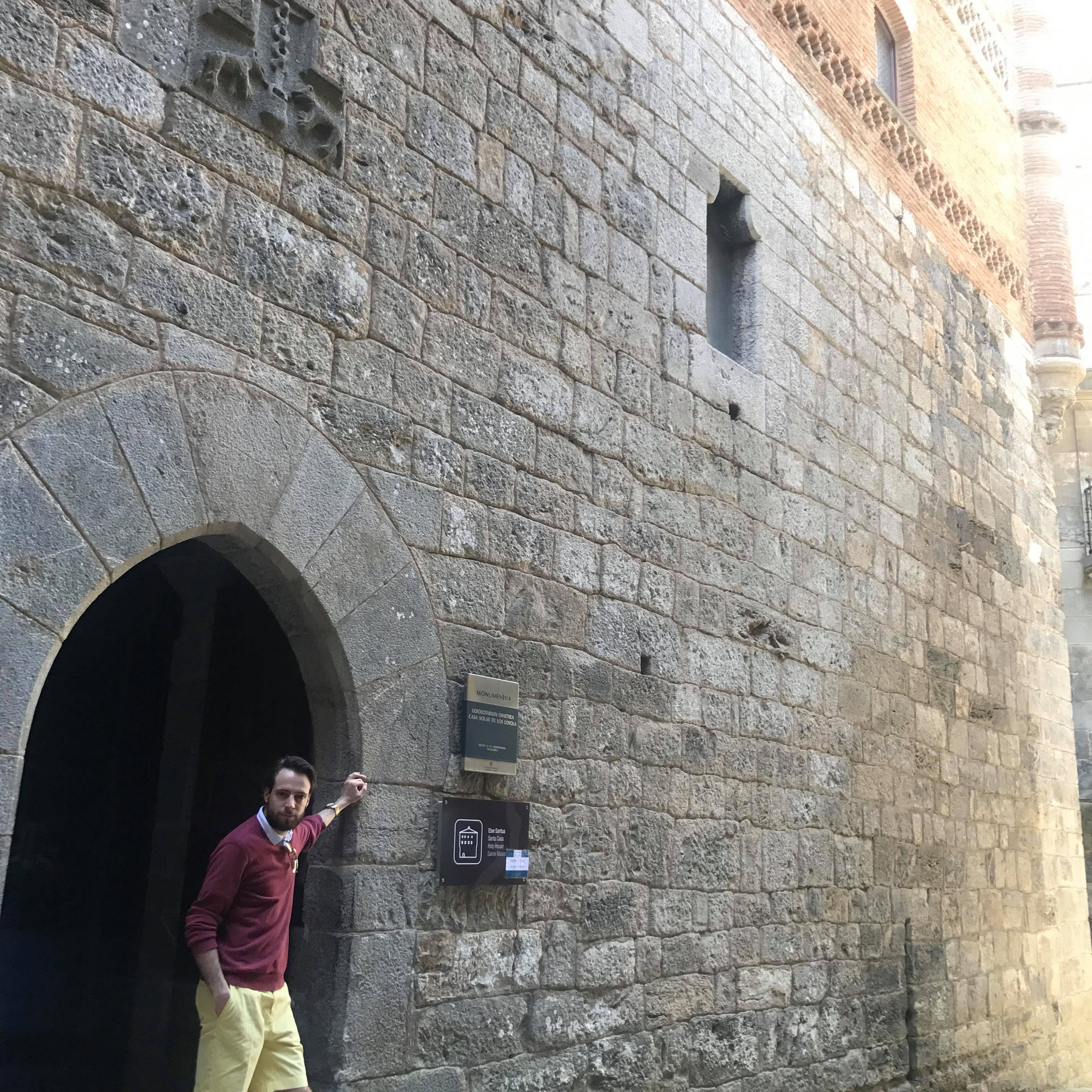
[/column]
[column sm=”6″] [/column]
[/row]
In 1682, when the Jesuits came to take possession of the house, they deeply modified the bedrooms. In 1688 began the ground works of the College. The third big change was made between 1904 and 1921: the indoor spaces were changed in order to build eight chapels, in addition to the already-existing oratory.
That oratory, on the third and last floor of the House-tower, where also were the kids bedrooms, is located not far from the room where Saint Ignatius, wounded and convalescent, convert to God.
.
[row]
[column sm=”6″]
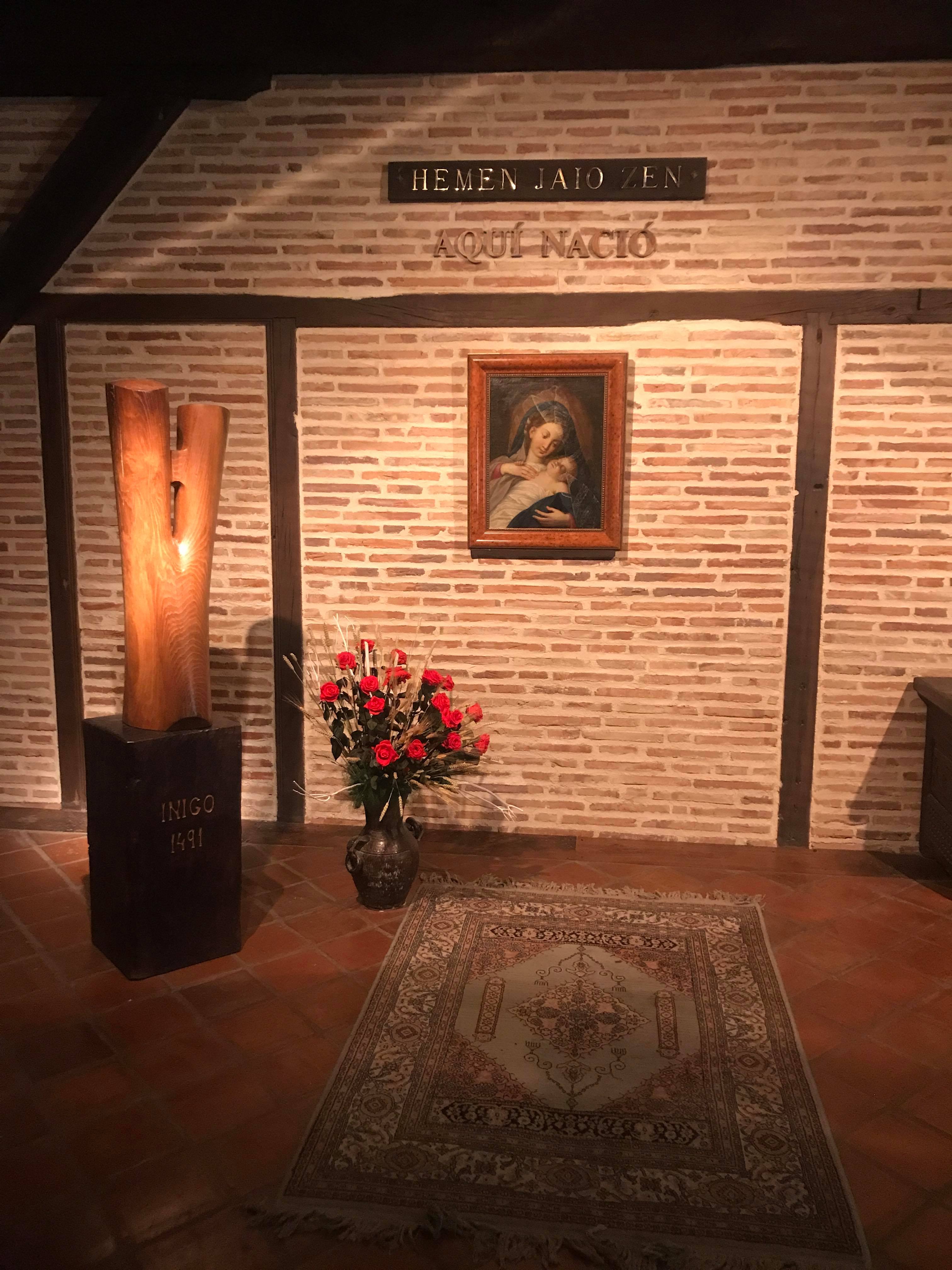
[/column]
[column sm=”6″] [/column]
[/row]
We ended the visit of the Holy House with the Diorama path that chronologically resumes the life of the great Saint with beautiful sceneries. This is the work of the French artist Georges Serraz.
There still are a lot of ignatian places not far from the Sanctuary, but we had to take the road again to other horizons. But it is not an end and we surely came back, maybe for a camino from Loyola to Manresa, in Cataluña, another great place of the Ignatius’s history.


